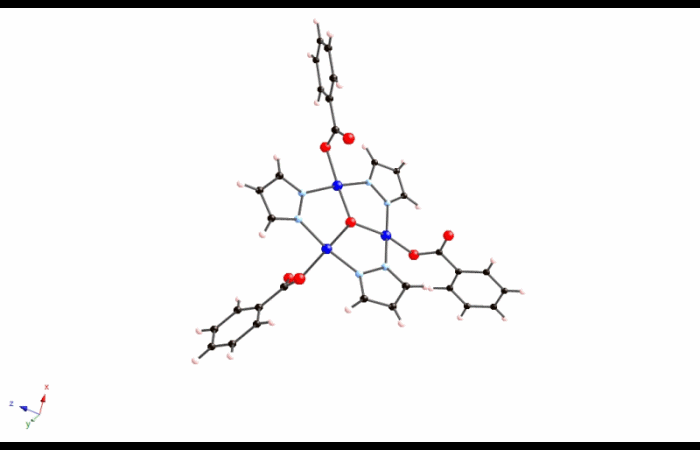
- Home
- The Raptis Laboratory
- Research Interests
Research Interests

We are interested in understanding the structural (molecular and electronic), spectroscopic, magnetic and chemical reactivity changes accompanying redox events. For example, chemical or electrochemical oxidation/reduction of multinuclear transition metal complexes can cause a structural rearrangement, a high-spin to low-spin (or vice versa) electronic configuration change, localization or delocalization of charges (in mixed-valent species), antiferromagnetic or ferromagnetic exchange. These are probed by a variety of in-house instrumental analysis methods, including single crystal X-ray crystallography, electrochemical methods (CV, DPV, SWV) and standard spectroscopic techniques (IR, UV-vis-NIR, NMR, Mass Spectroscopy). We collaborate with several research groups in the USA, Europe and China who provide us with access to additional techniques, such as magnetic measurememnts, EPR, Mössbauer, XPS, synchrotron-based techniques (XAS, XES), surface analysis techniques (AFM, SEM, TEM), and theoretical calculations (DFT). In addition, we pursue practical applications of the materials we synthesize and study. For example, we are developing metal-organic frameworks (MOF) that incorporate redox- or photo-active components, as specific and reversible gas sorbents and curry out porosity and gas sorption measurements via collaborations. In another project, we are developing novel Fe8-based magnetic resonance imaging (MRI) contrast agents targeted to specific biomarkers. Our new contrast agents are evaluated in vitro by in-house relaxometric techniques, and are tested in vivo (animal MRI) by our collaborators.
Group members are trained in synthetic inorganic chemistry, including manipulations under inert atmosphere using Dry-box and Schlenk techniques, microwave-assisted reactions, X-ray crystallography and electrochemical methods. We access all the shared Departmental spectroscopic facilities (e.g., NMR, IR, Mass Spectrometry) and visit National Labs (LANL for pulsed giant magnetic fields, SLAC synchrotron).
Finally, the Raptis group is in charge of the operation of the Departmental X-ray diffractometer, providing crystallographic services to other Department members and a few extramural collaborators.